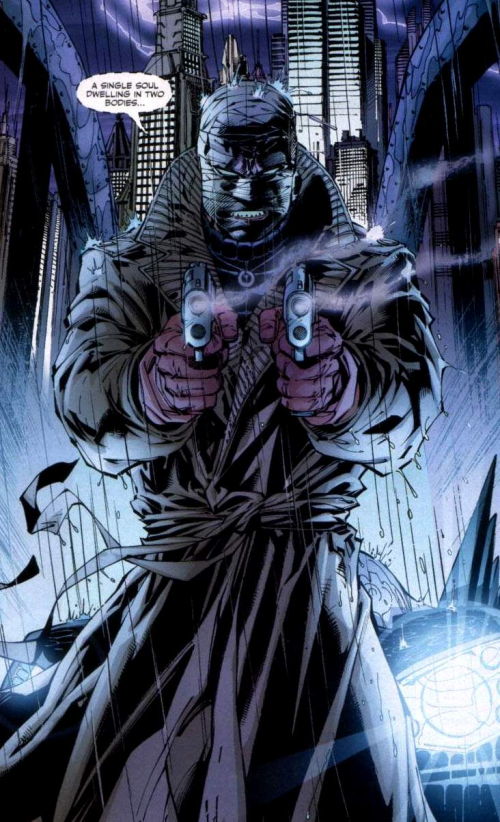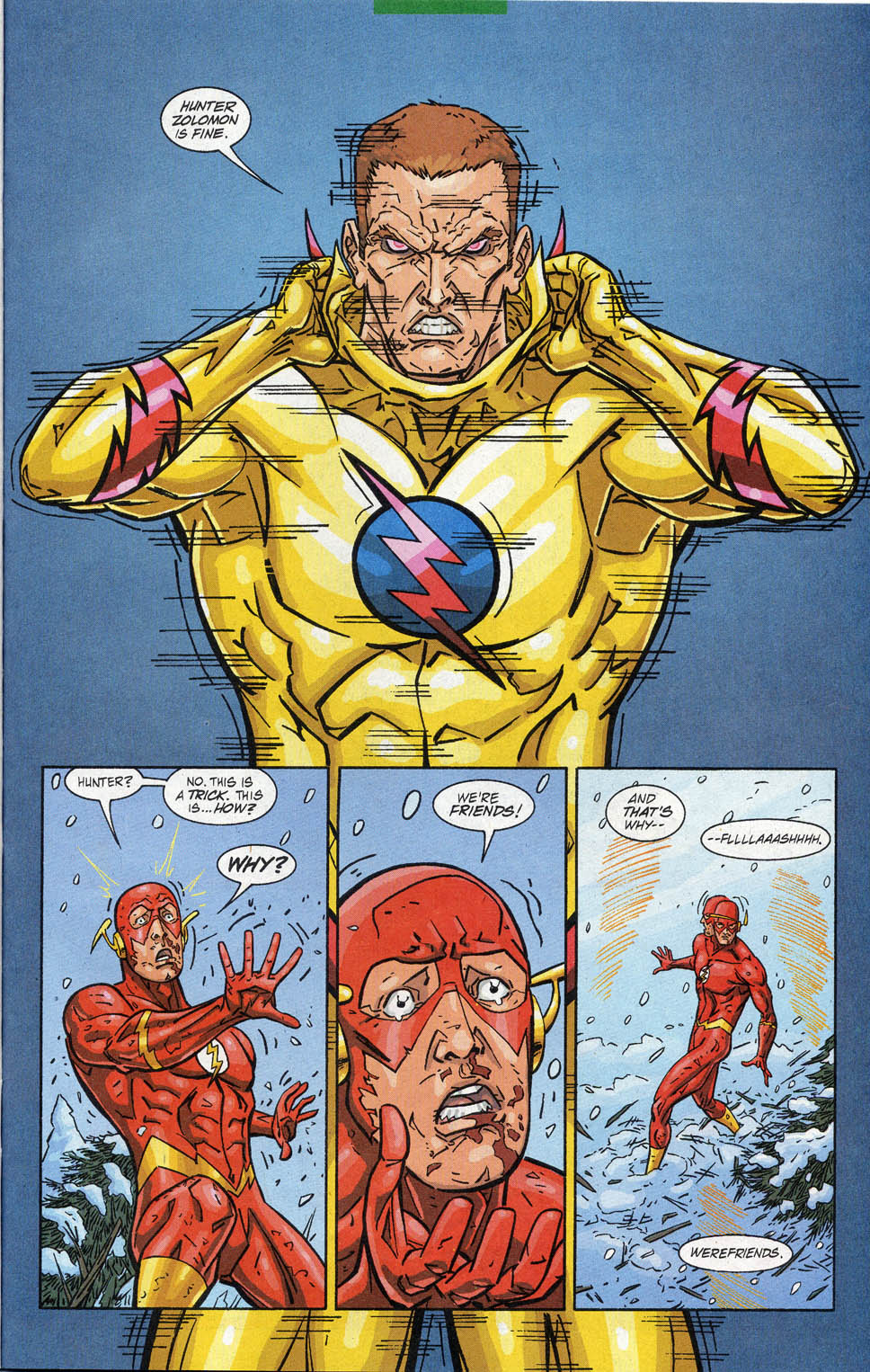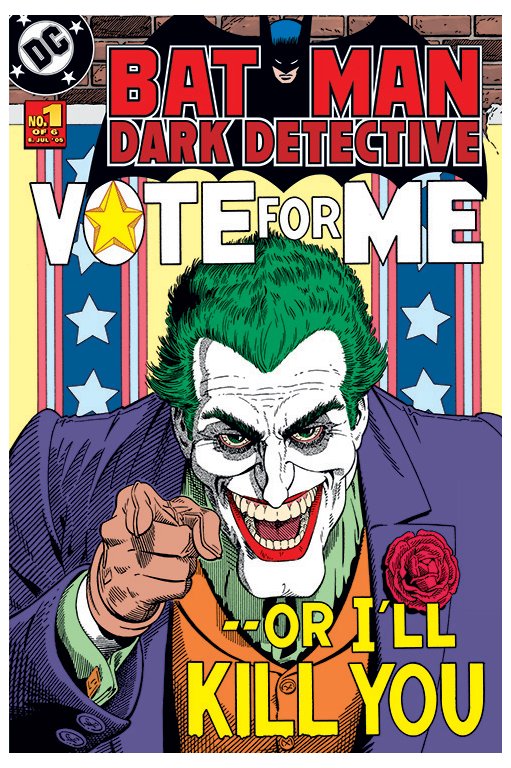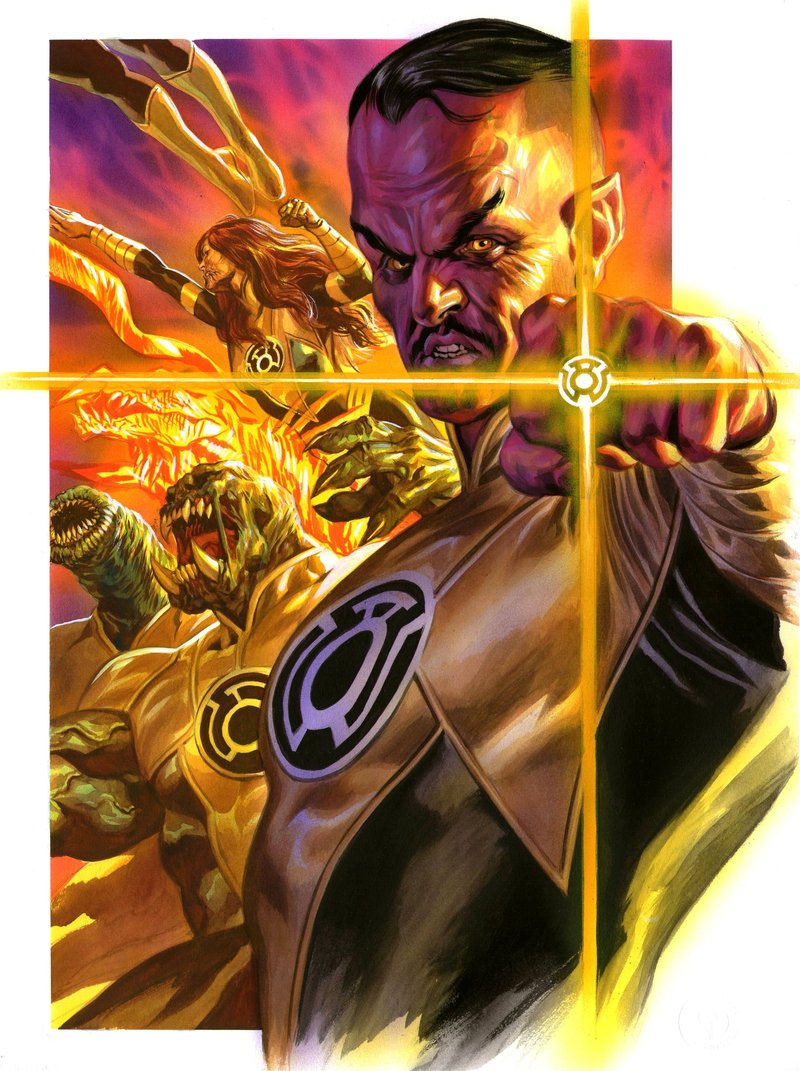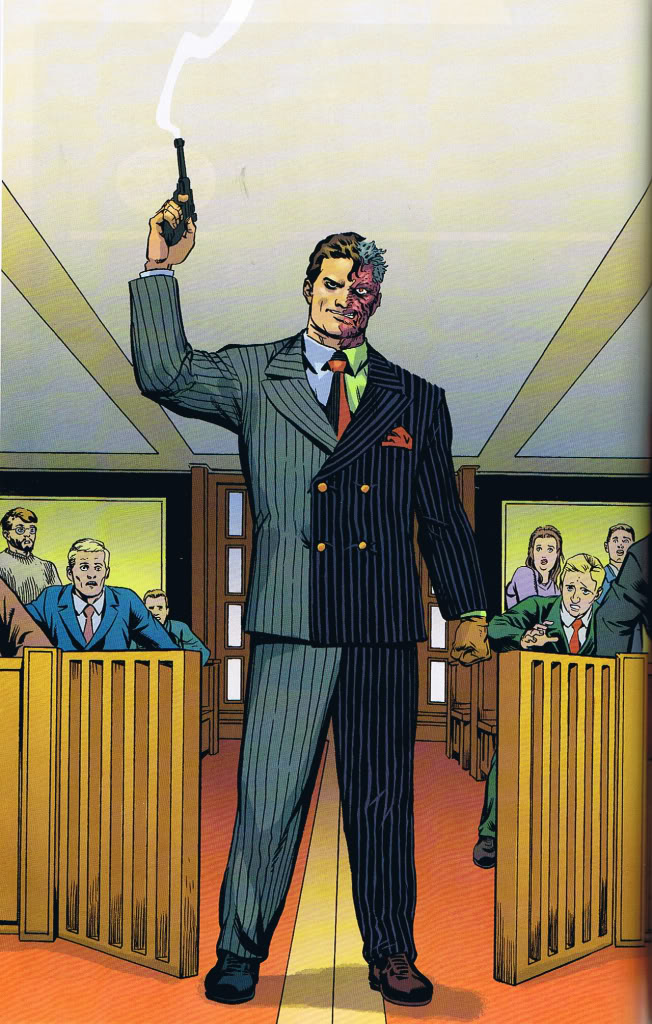Mild-mannered reporters by day, Greg Phillips and Nick Duke share an intense love of comic books that has made them the Hard-Traveling Fanboys. And if there’s anything that fanboys love, it’s debating what book is better than another book or which character is “cooler.” Enter Countdown, a monthly column where Greg and Nick will give a top five list and debate the merits therein.
Nick: Welcome back, fellow fanboys and fangirls to another edition of the Hard-Traveling Fanboys. It’s the second week of the month, which means it’s time once again to Countdown. This month, we’re taking a look at DC villains.
Greg: Everyone’s favorite derivatively titled comic book list is back! Several months back, we counted down our favorite Marvel super heroes. Well, in the interest of fairness, we decided it was time to look at the other side of the coin. Since DC Comics is in the midst of a villain-flavored event known as Forever Evil, we thought it appropriate to take a look at our favorite bad guys in the DCU.
Nick: And some comic fans might say, “Why not do this Countdown during DC’s Villains Month?” To those fans, we say, “Stifle.”
Greg: Yeah, we have perfectly good reasons for everything we do. Reasons like laziness and ignorance.
Nick: But seriously, no comic book universe can succeed without a bevy of villains to take on the heroes. Without these villains, the best superhero stories wouldn’t be possible. So, without further adieu, let’s start with Greg’s No. 5 DC villain.
Greg: Controversy alert!
Nick: I think I know what’s coming…
Greg’s No. 5: Cyborg Superman
Nick: No, I didn’t. Wow, I truly never could have seen that one coming.
Greg: I will acknowledge that Hank Henshaw doesn’t have the long, rich history of many of the great DC villains. Paring down this list was extremely difficult, but Henshaw was introduced roughly around the peak of my childhood comic book fandom. And like many great villains, Henshaw was steeped in tragedy from the get-go. Blaming Superman for the deaths of his wife and crew, Henshaw started as a sort of twisted Reed Richards, left alone and doomed to a soulless life after the accident.
He started, naturally, as a Superman villain, engineering the destruction of Coast City and the near-ruination of Superman’s reputation. Over the years, he came back to haunt the Man of Steel time and time again, and also transitioned into being one of the best Green Lantern villains.
Nick: I’ve only read a handful of Cyborg Superman appearances, but I’ve enjoyed them all. Although, I suppose that could have something to do with the fact that Geoff Johns wrote most of them.
Greg: Obviously I hold a childhood attachment to Dan Jurgens’ creation, but I feel he has all the key elements a great heel needs — an element of tragedy, a compelling purpose, an air of true menace and long-term development. Henshaw’s quest became simple by the mid-2000s: he simply sought death, the one thing he could never truly achieve. There’s something inherently sad and intriguing about a man whose only wish is to die.
And his plan throughout the Death and Return of Superman was brilliantly maniacal. To be honest, his charade even worked on me as a young reader!
Nick: That’s the one thing that stood out to me about Henshaw: his motivation. While I’m not as familiar with him as you are, the idea of a villain seeking death fascinated me when he first was introduced to me in the pages of Sinestro Corps War.
Greg: While I’m sure my selection will raise ire among some, Henshaw stands out to me as one of the few villains who truly progressed and developed over time rather than doing the same things over and over.
Nick: And while Greg’s No. 5 is somewhat controversial, mine might be as well.
Nick’s No. 5: Hush
Greg: One of my favorite characters from one of my favorite stories of all time. He just narrowly missed my list.
Nick: One of two relatively recently created villains that I considered for my list, Hush is a creation of Jim Lee and Jeph Loeb. There have been several attempts at creating an “anti-Bruce” over the years, but in Tommy Elliot, we have the best of them all. Coming from a well-to-do family much like the Waynes, Tommy doesn’t admire his parents the way Bruce does. Rather, he seeks their deaths, and with them the power and wealth he feels should be his. However, Tommy’s mother survives with the help of Dr. Thomas Wayne, something Tommy never forgets or forgives the Waynes, especially Bruce, for.
In the years that follow, Tommy surmises Bruce’s secret and then begins planning his revenge on Batman. I don’t want to spoil the twists and turns from there, but Hush puts Batman through the emotional wringer unlike any villain before or since, including a fake revival of Jason Todd at a time when there was no better way to get to Bruce psychologically and emotionally.
Greg: I’m glad you said that, because I agree: Tommy Elliot is the best “anti-Bruce” I’ve ever read. He’s incredibly evil, incredibly smart and incredibly dangerous, but he also has strong motivations. He wants revenge on Bruce and his family for costing him the fortune still controlled by his decrepit mother. He’s got a killer look and poses a believable threat to Bruce, which is difficult to pull off for many creative teams. Of all the plans Batman’s foes have formed through the years, Tommy’s initial plan was perhaps the most extensive.
Paul Dini came back years later and added some new wrinkles to Hush, giving him a surgically altered face making him appear to be Bruce Wayne himself.
Nick: And as great as that initial story was, every great villain has to eventually return. While “Hush Returns” was somewhat of a missed opportunity, it wasn’t long before Dini picked up the Hush reins in “Heart of Hush.” The premise was simple: What better way to get at Batman than to strike at the people he cares for the most? Rather than striking at Nightwing or Robin, he sets his sights on Catwoman, the one female character who has been able to continually hold Batman’s interest.
And as Greg said, he eventually alters his face to look like Bruce, putting him in a perfect position to challenge both Bruce and Batman simultaneously.
Greg: Hush is another character that holds a special place in my heart due to “Hush” being the story that brought me back to comics, as detailed in our Secret Origins.
Nick: Hush has yet to make an impact in the New 52, but that could just be Tommy Elliot biding his time yet again. Let’s hope that’s the case.
Greg: Another character that has yet to appear (at least this version) in the New 52 is the number four entrant on my list.
Greg’s No. 4: Zoom (Hunter Zolomon)
Nick: Wow, you are just full of surprises tonight.
Greg: That’s right. Next to Batman, Flash may have the deepest rogues gallery in the DC Universe, but my selection is not the original Professor Zoom/Reverse Flash, Eobard Thawne. Instead, I’m taking one of Geoff Johns’ greatest creations, the second Reverse Flash, Zoom!
Nick: Gotta be honest here. I’m completely unfamiliar, so I’ll get out of your way here.
Greg: Again, one of the unifying threads of many of my favorite villains is an element of tragedy. Hunter Zolomon certainly has that. A skilled detective, Zolomon made a mistake in the field that left his wife’s father dead and himself permanently injured. Racked with guilt and self-pity, Zolomon travels to Keystone City and becomes a specialist in supervillain profiling. He helps the Flash (Wally West) and the Keystone Police on numerous cases, including taking down the latest collection of the Rogues. After another catastrophic injury, Zolomon snaps when his friend Wally refuses to use time travel to reverse his condition. He feels Wally isn’t living up to his potential like his predecessor Barry Allen did. To be a truly great hero, Zolomon reasons, Wally must experience personal tragedy.
I’ll avoid spoiling the lengths to which Hunter goes, but Johns designs him to be Wally’s opposite in nearly every way — a true Reverse Flash. Zolomon’s insanity only grows as he gains more power, putting Wally’s family and friends through sheer hell for months. The coup de grace is one of the sickest, most emotionally wrenching scenes I’ve ever read in a comic. Make no mistake, Zolomon commits some of the worst atrocities of any character on my list, but his motivation remains strong and clear. He views himself as the yin to West’s yang.
For those who haven’t experienced Zoom’s story, the Geoff Johns Flash Omnibus collections are the way to go.
Nick: Sounds like I should check it out. Perhaps this can be fodder for a new Longbook Hunters in the future.
In keeping with unlikely choices, here’s my No. 4.
Nick’s No. 4: Superboy-Prime
Greg: Prime is a very divisive character, but I’m with you here. I thought he was compelling from the moment DC reintroduced him leading into Infinite Crisis. Taking a character who was “left behind” after Crisis on Infinite Earths and showing how this boy was condemned to be stuck as a teenager watching the new heroes fail to inspire time and time again was a stroke of genius. Prime, who we must remember was still a teenager, grew angrier and angrier about his predicament, especially as he watched Batman become paranoid, Superman become aloof and Wonder Woman become a bloodthirsty warrior.
Plus, the dude was just plain scary. Power levels off the chart combined with a teenager’s emotional instability led to a character that provided two of the best storylines I’ve read — Infinite Crisis and The Sinestro Corps War.
Nick: Superboy-Prime was a character first introduced during Crisis on Infinite Earths, with the concept essentially being that he is destined to become Superman, but he is from “our” Earth, where superheroes only exist in comics. However, before he can become the hero he is destined to be, Earth-Prime is destroyed by the Anti-Monitor, leaving Superboy-Prime to fight the Anti-Monitor alongside other heroes from throughout the multiverse. At the end of the event, SP, along with a handful of other survivors, chooses to enter a “pocket dimension” rather than being folded into the new singular universe.
And that was the last we saw of Prime for nearly 20 years, although we’d later learn that he had been subtly influencing the course of the DC Universe. After years of being frustrated by the DC heroes and their inability to inspire and set a positive example, SP and Alexander Luthor of Earth-3 set in motion a plan to recreate the multiverse and use it to create a perfect universe where they remain in power. Upon leaving the pocket dimension, we get a showcase of Prime’s awesome power, as he accidentally kills two members of the Teen Titans. He is eventually vanquished at the end of Infinite Crisis, but returns as a member of the Sinestro Corps War during the event of the same name. It is there where I became truly endeared to the character and even found him sympathetic in a way. Sadly, DC has badly botched the character since then, ruining a character that had the potential to become THE great Superman villain.
Greg: Indeed. Like Hush, Superboy-Prime was loaded with potential and then mishandled by pretty much every writer other than Johns. Subsequent writers made the kid one-dimensional at best, completely frustrating at worst. Sure, there were always complaints that he was “whiny,” but that’s what heels do — whine. The writers of Countdown and some of his other appearances, though, took that to the extreme. Still, crappy writing (“I’ll kill you to death!”) shouldn’t sully the basic idea of Prime, who seemed poised to become a great Superman (and DC Universe) villain. I’ll never forget his epic throwdown with Sodam Yat.
Nick: Like many great villains, the thing about Superboy-Prime was that he was relatable. He felt like he had been promised the role of Superman and that it was owed to him, only to be tucked away in a place where he could never achieve his destiny. However, it looks as if we’ll never see a true end to that story.
Greg’s No. 3: Lex Luthor
Nick: You knew Lex was bound to make an appearance sooner or later.
Greg: A safe, predictable choice, to be sure, but it’s warranted for one of the most iconic characters in all of comics. Ol’ Baldy has been a thorn in Superman’s side for virtually the entirety of DC’s existence, but he’s also posed a threat to the DC Universe as a whole. Everyone from Batman to Wonder Woman has had at least a few memorable encounters with the founder of LexCorp.
Nick: Unlike The Joker, Lex has many times served as a foe for the larger DCU rather than just one character. However, he’ll always be tied to Superman, in one way or another.
Greg: While my exposure to Lex is primarily limited to his post-Crisis appearances, he’s racked up an impressive list of villainous accomplishments. Off the top of my head, he ruined the life of Gangbuster, helped create the likes of Metallo and Bizarro, faked his own death and pretended to be his son, bedded Supergirl, outwitted the devil himself, tried to buy Gotham City, successfully ran for president, abused said power while trying to kill Superman, then killed millions of people during the 52 event in order to prove a point. And that’s just the tip of the iceberg.
Lex has always fascinated me for one reason above all others — he’s a man with no powers, yet he’s the arch-foe of the most powerful superhero of them all. Somehow, writers and artists throughout the years have forged Lex into a believable opponent for Superman. We’re never left, as readers, questioning how Lex poses a threat. He simply does.
But Luthor’s appeal goes deeper than that. Why? Say it with me, folks: motivation. Lex has real motivation to go after Superman. After all, to Lex, he is the hero of the story and Superman is the alien invader.
In Luthor’s eyes, Superman has hindered humanity far more than he’s helped it. As Mick Foley has often said, a villain should genuinely believe the things he’s saying, and Lex certainly does when it comes to Kal-El.
Nick: Yeah, Lex holds the view that Superman makes humanity lazy, in that people will stand around waiting for Superman to fix everything rather than solving their own problems. It’s an interesting view, to be sure, and one that Lex is questioning currently in the pages of Forever Evil.
Greg: He’s also one of the few characters who I totally buy getting out of every situation he finds himself in. Often, I scoff when creators write characters into a corner and magically get them out, but with Lex it seems viable that, after all these years, Superman just can’t seem to get rid of him.
Nick: While Superman’s most iconic villain is your No. 3, the main adversary for DC’s other mainstay hero is mine.
Nick’s No. 3: The Joker
Greg: Many may actually be surprised to see him so low. A strong argument could be made that Joker is the best villain in all of comics, not just DC lore.
Nick: Now, I know having the Joker on the list is completely expected. However, there’s a reason why the Joker has been held in such high regard for so long.
For most of the other characters on our list, we’ve been able to give you short recaps of their origins and their motivations. I can’t do that for the Joker, and I think that’s what makes him such a great villain. While Batman can plan for any contingency and is always prepared for what the Penguin or Scarecrow might throw at him mext, it’s impossible to predict just when, where or how the Joker will strike.
And while the character may have been a joke-based villain during the Silver Age, he’s transitioned into a truly terrifying character that is capable of even the most heinous acts, despite his clown-like appearance.
He’s also been the character that has most frequently challenged Batman’s strict moral code. He’s taken more lives and done more damage, especially to those close to Batman, than anyone else, yet Batman refuses to cross the line and kill the Joker. Which, many would argue, is the Joker’s ultimate motivation: to see Batman lose his “code” and join the Joker in embracing his full insanity.
Also, like many great characters, there are plenty of interpretations of the Joker that all work on their own merits. Whether it’s Silver Age Joker using exploding magic tricks or the recent faceless Joker challenging the very nature of what Batman has become, the Joker endures as one of the greatest villains not just in comics, but all of literature,
Greg: There are a lot of superheroes with many varied, equally valid interpretations — Batman, Superman and the Hulk, for instance. But there are precious few supervillains who are in that same boat. The Joker has been a cackling prankster, a frightening monster and a darkly funny sociopath, and all those takes have led to quality stories.
And what foe could be a better match for the cold, calculating Dark Knight than the utterly insane, unpredictable Joker? It’s perhaps comics’ best back-and-forth battle, one that endures changes in creative direction or even companywide reboots.
Speaking of which …
Greg’s No. 2: The Joker
Nick: All yours, sir.
Greg: While we’ve already gone on and on about the Clown Prince of Crime, let me put this out there too: no villain in the DC Universe has had better, more compelling stories than the Joker. From The Laughing Fish to The Dark Knight Returns to Mad Love to The Killing Joke to No Man’s Land to Death of the Family and everything in between, there’s a reason the best writers in comics history have actively sought to write the Joker.
I know I’ve harped on the importance of tragedy and motivation to all great villains, but the Joker is almost the outlier here. Sure, there’s the tragedy of losing his family. Or is there? And there’s the motivating factor of seeking some form of comfort in someone as insane as he is (at least in his view). Or is there? One of the most beautiful aspects of the Joker is that he has no one, true, defining origin. Everything with him is, as Alan Moore wrote in The Killing Joke, “multiple choice.” He’s been imitated more than any other villain (even other prominent villains like the Trickster, the Prankster and the Green Goblin have elements cobbled from the Joker), yet none have managed to replicate the depth of his lunacy. Each creator seems to add his or her own flavor to the evil clown, merely adding to his rich history.
Like Lex, Joker has no powers. But like Lex, Joker is actually a more believable threat to Batman than any of his powered foes. Who would you rather find out is on the run — Killer Croc or Mr. J?
Nick’s No. 2: Sinestro
Nick: For many, having the Joker below Thaal Sinestro might be considered ridiculous. I would suggest those people are thinking of Silver Age, overly-large-headed Sinestro. Those people probably haven’t read the last decade of Green Lantern stories, in which Geoff Johns has crafted a masterpiece that honestly might be more about the redemption of Sinestro than the redemption of Hal Jordan.
Greg: I wholly subscribe to that reading of Johns’ Green Lantern. It’s at least a 60-40 split between the story of Hal Jordan and the story of Thaal Sinestro. I’ll have … more to say on this subject in a bit.
Nick: Sinestro is one of the greatest Green Lanterns to ever wear the ring, but was excommunicated from the Corps, his crime being that he used his ring to instill a fearful society of law and order on his home planet of Korugar. He was taken down, on the orders of the Guardians of the University, by his protege, Hal. However, he swore to get his revenge and remake the universe and the Corps in his image. He and Hal clashed for years, but it wasn’t until their respective deaths and rebirths that the story hit its highest notes. After Jordan’s return to the GLC, Sinestro countered by creating his own Corps with yellow, fear-based rings. He waged war against the Green Lanterns before eventually falling. However, even in his defeat, he accomplished the goal of pushing the Corps to approve the use of lethal force, leaving the readers to wonder whether Sinestro had truly lost or won. He’s had plenty of great moments since then and found his peace in the final pages of Johns’ GL run, including a look into the future that suggests Sinestro’s path to redemption may not be quite over. For all the ways he’s pushed Hal to better himself and all the sympathetic motives, Sinestro takes the No. 2 spot on my list.
Greg: My love for the character goes even further.
Greg’s No. 1: Sinestro
Greg: Ah, we arrive at the pinnacle of relatable, tragic, soundly motivated DC villains: Thaal Sinestro.
Sinestro appears atop my list for the same reason he appears on Nick’s — the last 10 years of Green Lantern stories. Sinestro’s motives are driven by the same ethics of many superheroes: duty, honor and the preservation of life. Yet Sinestro, as all villains inevitably do, went astray and used incredibly harsh tactics to prove his point.
It’s easy to view him as more of an antihero than a true villain, but that ignores some of the atrocities he has committed. From freeing Parallax to wreaking havoc throughout the cosmos with his Sinestro Corps, there is no doubt he has claimed many lives and threatened countless galaxies with enslavement.
Despite that, he remains motivated by those same factors that drove him to become a Green Lantern in the first place. His relationship with Hal Jordan, as we’ve discussed in this column before, is perhaps the most complex and compelling in the entire DC Universe. They’re sworn enemies, yet it seems they continually push each other to greater heights. The closest comparison I could make in all of comics would be the Magneto-Professor X relationship, yet this is arguably even more antagonistic. And yet, through it all, we’re never really sure if Sinestro is merely doing what he thinks he must in order to push Hal to the next level.
In my eyes, no villain in the last decade has been more compelling than Sinestro.
Nick’s No. 1: Two-Face
Greg: You’ve often told me that Harvey Dent is your favorite villainous character not just in comics, but in all of fiction.
Nick: Now, many may be surprised to see Two-Face take the top spot, but he most certainly is my favorite villain in all of fiction, not just comics. When it comes to comic villains, the best characters are often those that have a real personal connection to the hero they seek to topple. As far as DC villains go, it’s hard to think of another villain that has such a connection to their respective hero as Harvey Dent does to Batman.
Batman, at his core, is a character driven by an immense sense of guilt, and no character better embodies that guilt than Two-Face. Batman is arguably directly responsible for the events that led to Dent becoming Two-Face, and Bruce often agonizes over the decisions he made that wound up hurting Harvey.
Greg: Batman has the greatest rogues gallery of them all, and it’s because his villains are every bit as complex as the hero of the story. In the case of Two-Face, he’s a living reflection of Batman’s own duality, taken to the extreme. While Bruce tries his best to manage his dark side, Dent is forever caught in a battle he can’t win against his own dark side.
Nick: He’s the rare villain that gives Batman pause. And he gives Batman pause because when the character is written at his best, you can still see the man within the monster that he has become. And Bruce has an undying desire to see Harvey reformed and redeemed. In fact, we even got to see that in the excellent story, “Face the Face” by James Robinson. In that story, we see a reformed Dent leading the charge to protect Gotham while Batman is away. Yet, Harvey is eventually implicated in a series of crimes and it is Batman’s eventual distrust of him that pushes him back into the persona of Two-Face. He’s also been handled brilliantly by Jeph Loeb and Tim Sale in “The Long Halloween” and “Dark Victory,” two of my personal favorite Bat-stories.
And of course, there’s the duality of the character, which is meant to provide a comparison for Bruce/Batman’s own dual nature. The spin here, though, is the desire to do good and the desire to do evil all spun into one person. This enables truly gifted writers to allow readers to see both sides of the conflict through the eyes of just one character. Ultimately, though, Two-Face is all about the pursuit of justice, with his inner conflict simply being over which ends justify the means. Whatever the future holds in store for the character, I’ll always believe in Harvey Dent.
Greg: Those Loeb/Tim Sale collaborations do a wonderful job capturing the tragic transformation of Harvey Dent. More than most supervillains, readers can truly sympathize with Two-Face despite his often evil acts. And Batman’s empathy for Harvey humanizes the Dark Knight, which many writers forget about. When dealing with Two-Face, we truly see the man underneath the Bat. That’s a great example of the last important aspect of a great villain: making the hero better.
Nick: Yes, Harvey has a connection to both Bruce and Batman that no other villain seems to have.
Well, that about puts a bow on this month’s Countdown. Greg, tell the people what we’ve got coming up next week.
Greg: Appropriately enough, Two-Face features prominently in our next edition of the Longbook Hunters, where we’ll take a look at Gotham Central by Ed Brubaker, Greg Rucka and Michael Lark.
Nick: It’s a great book that I’m looking forward to taking a second look at. Well, that does it for us this week. Hit us up at GregP@placetobenation.com or NickD@placetobenation, or contact us on the PTB Facebook page or on Twitter (@gphillips8652 and @nickduke87) for any feedback you have. Who are your favorite DC villains?

